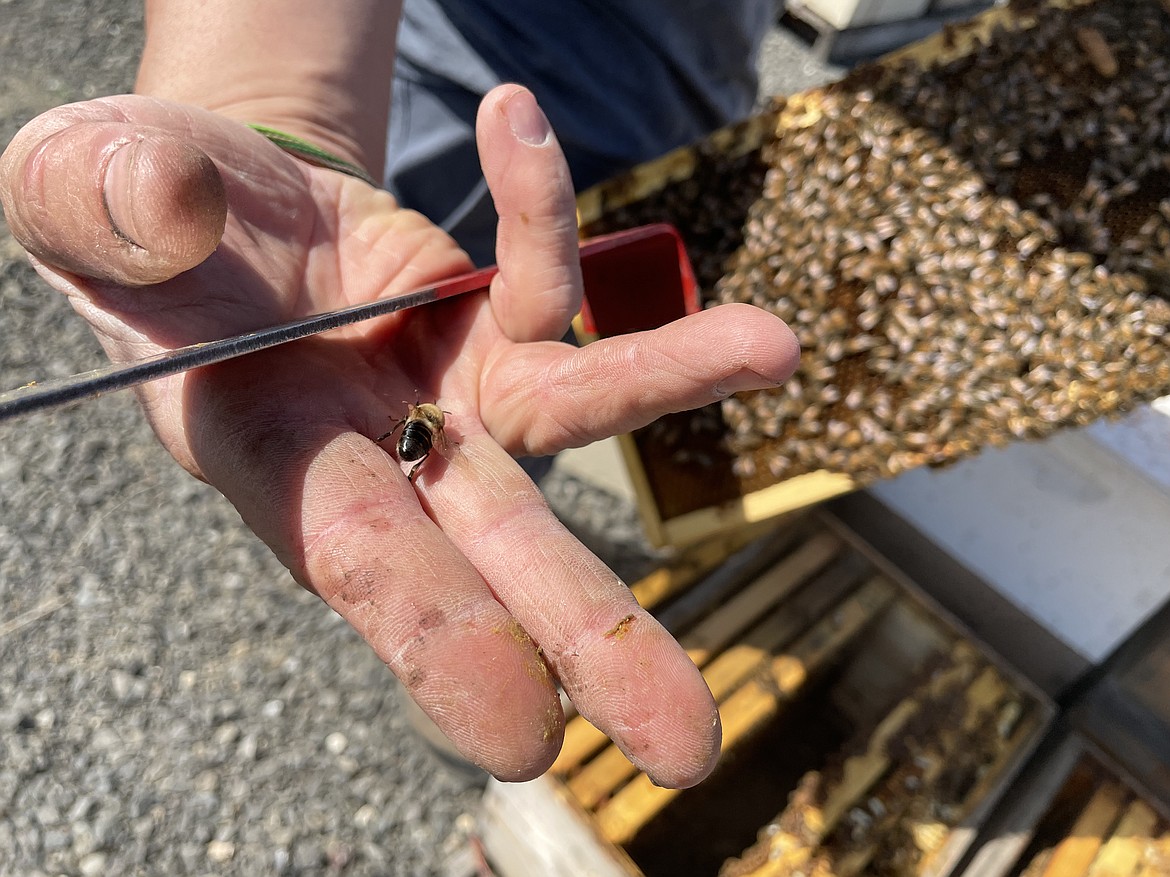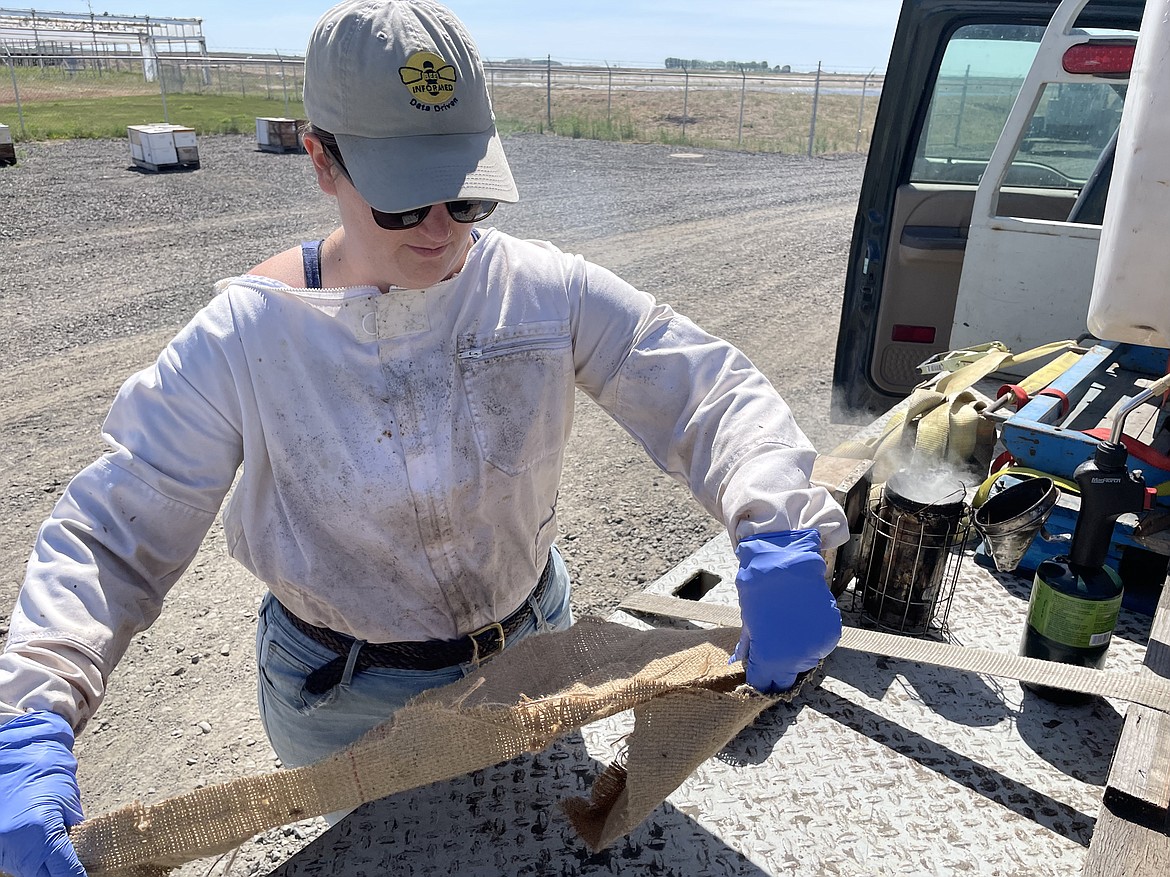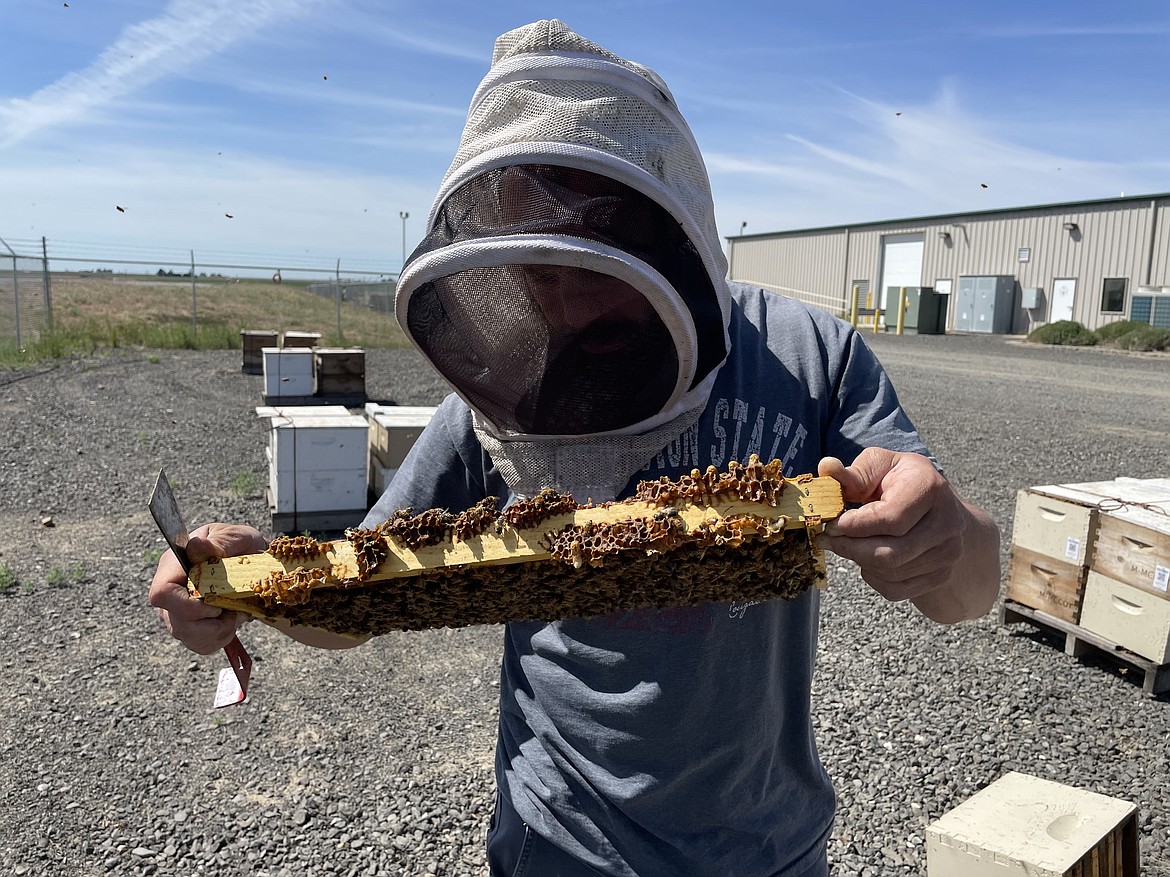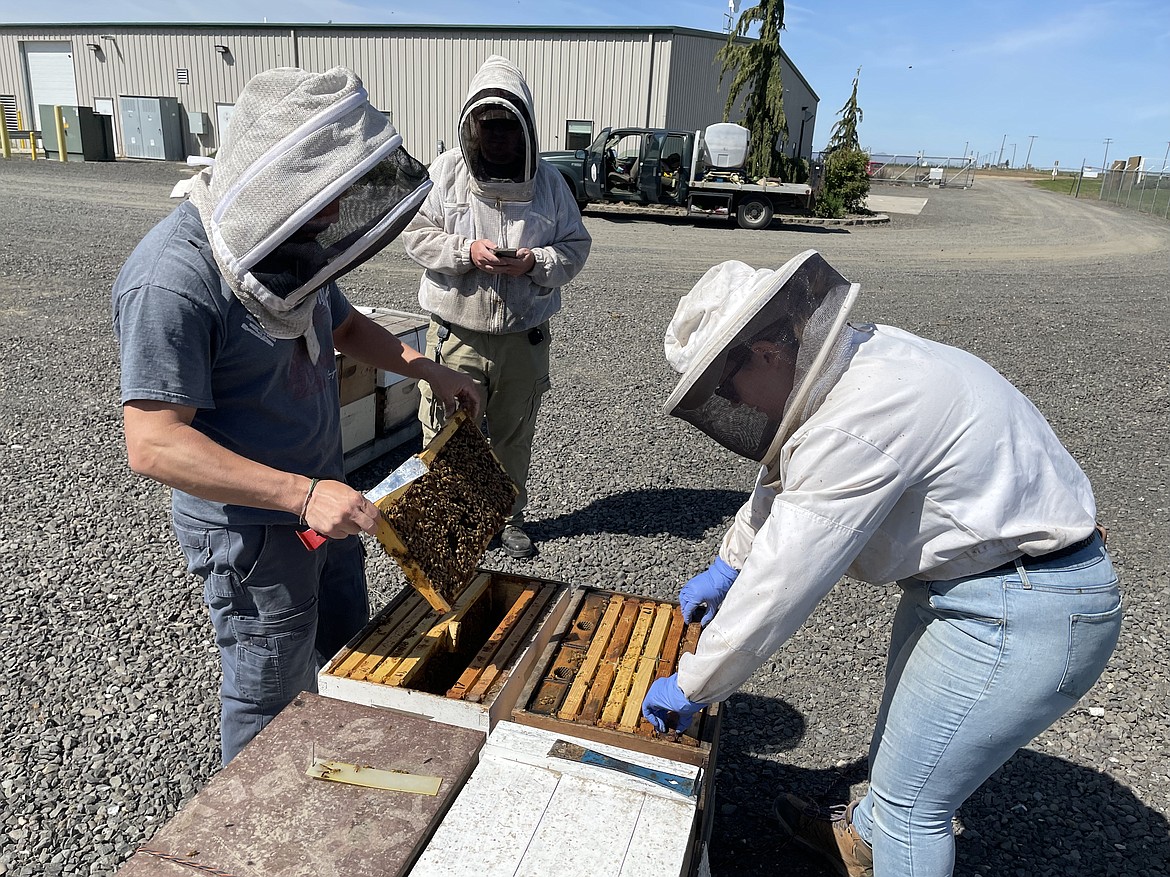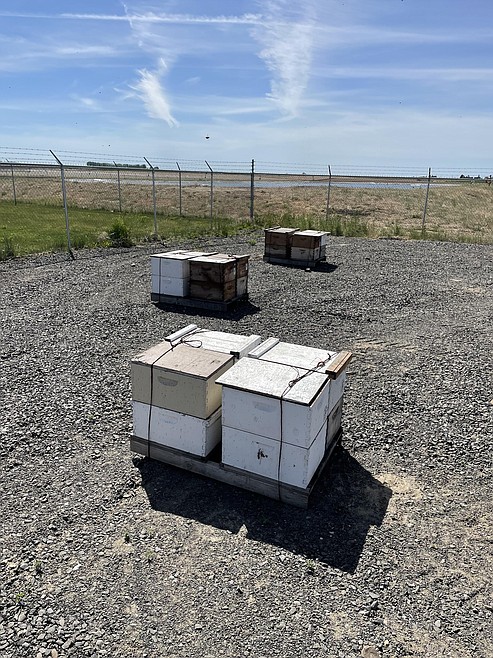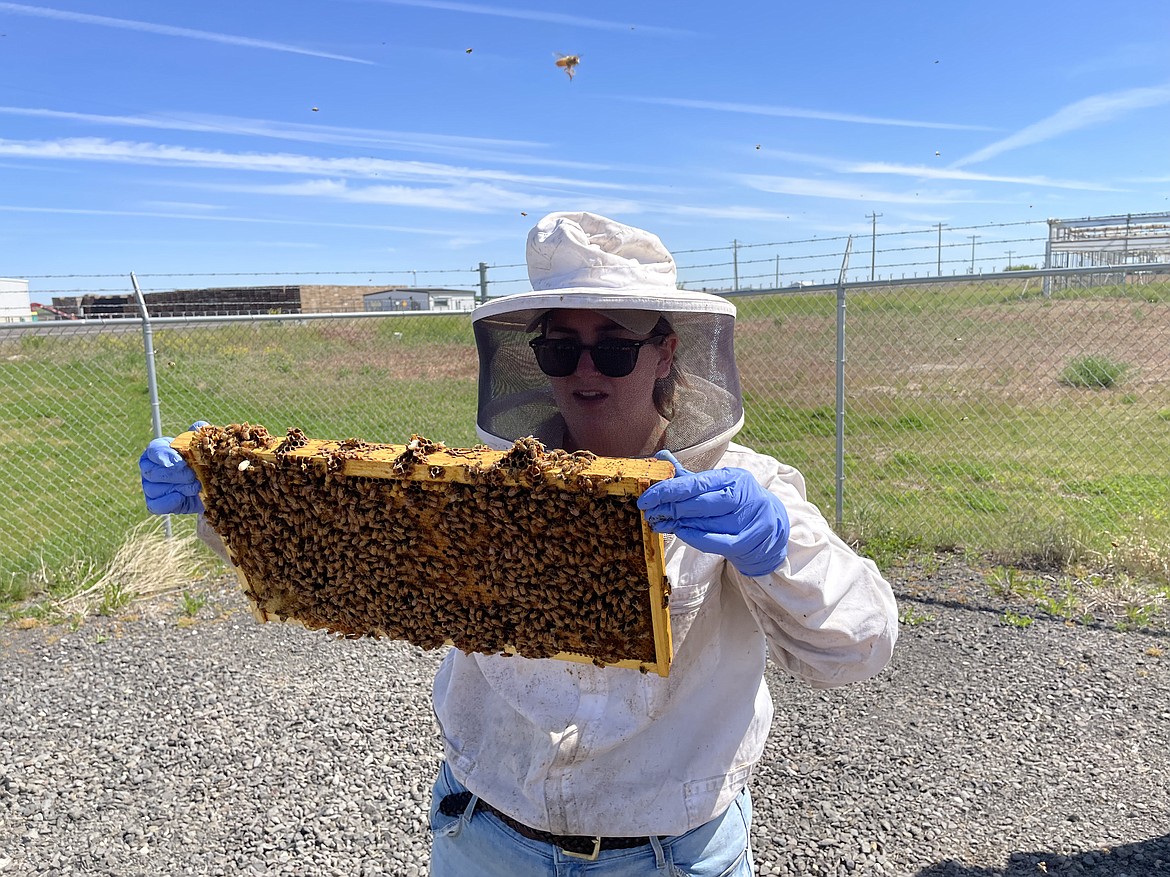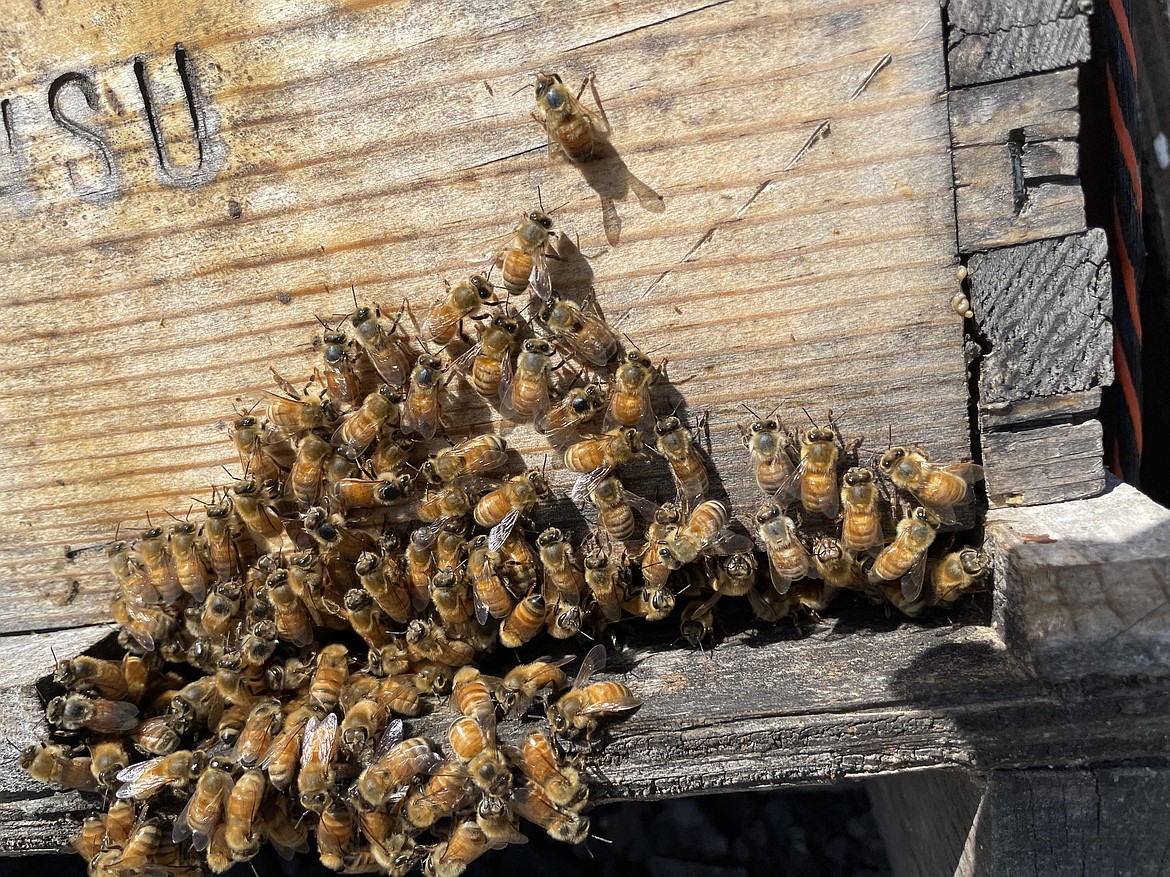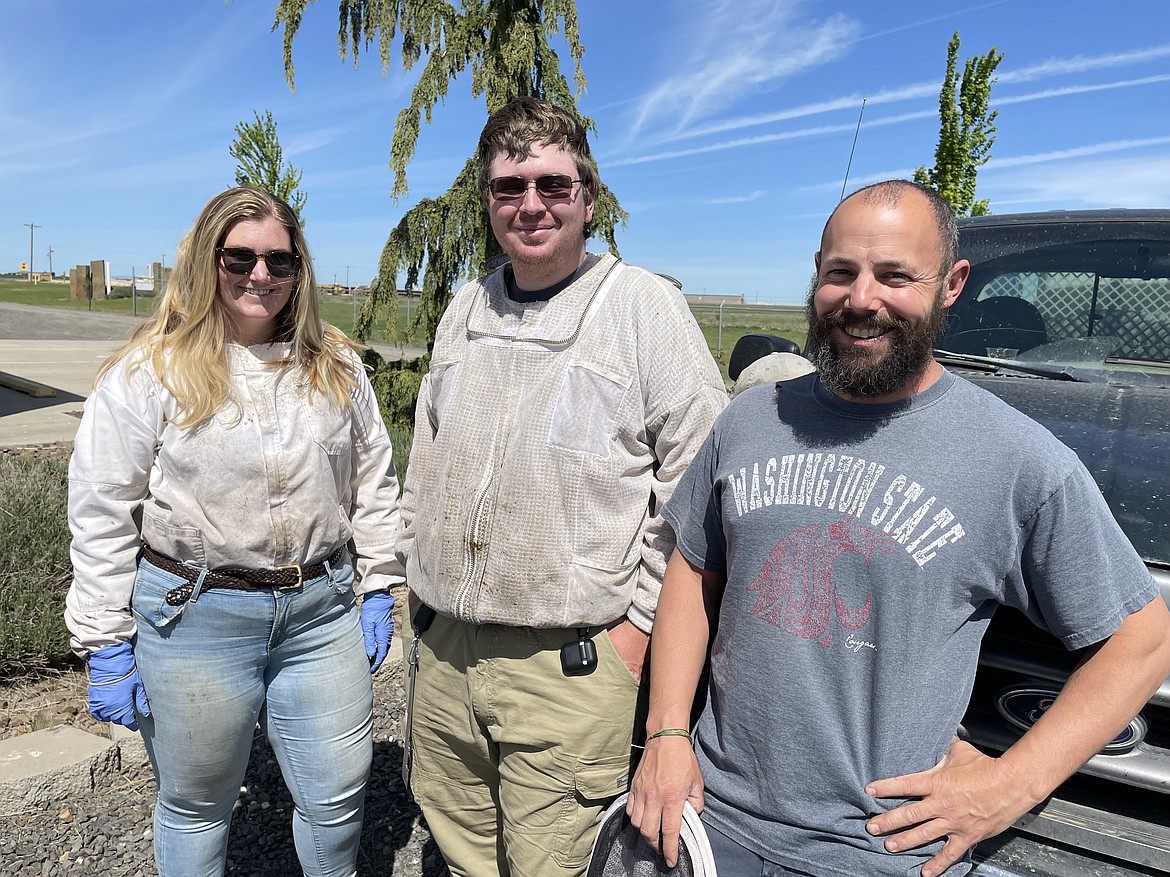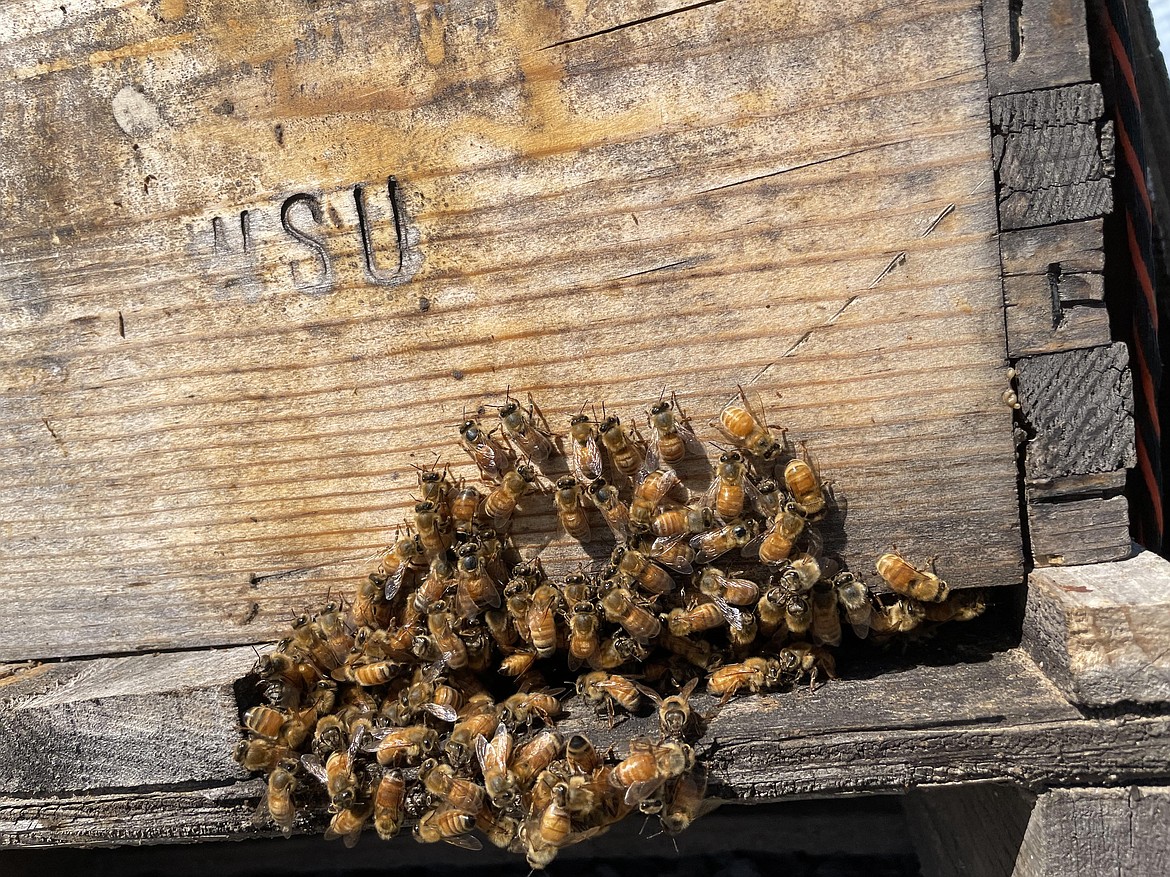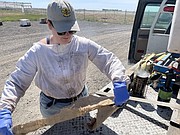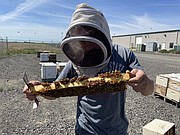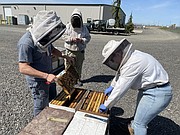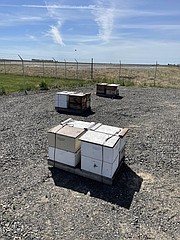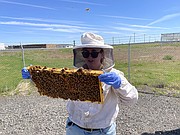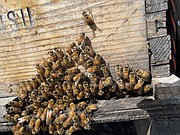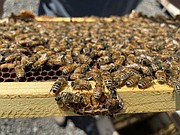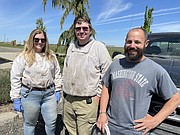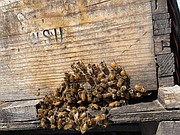WSU Bee research center slowly buzzing with activity
CHARLES H. FEATHERSTONE | Hagadone News Network | UPDATED 4 years, 2 months AGO
OTHELLO — As Kelly Kulhanek examined the frame covered with bees, turning it over with hands covered in blue nitrile gloves, she felt something just below the bottom knuckle of her left index finger.
“Ouch.”
She said it quietly, matter-of-factly, without flinching.
Kulhanek glanced down at the stinger stuck in her glove, left behind in one last act of futile resistance as the honeybee pulled away.
“Occupational hazard,” she said as she gently brushed the stinger off.
She is, after all, handling a bee-covered frame just pulled from a hive, something she does regularly as part of her job as a post-doctoral researcher in Washington State University’s Honey Bees and Pollinators program, part of the university’s entomology department.
It’s mid-May, and Kulhanek is out at WSU’s Honey Bee and Pollinator Research, Extension and Education Facility in Bruce, just south of the Port of Othello’s industrial park near the intersection of West Cunningham and South Booker roads, about six miles east of Othello.
She’s there with Brandon Hopkins, an assistant research professor at WSU, and Riley Reed, a graduate student in the bee program scanning bar codes on the side of each hive with a cellphone, to check on the state of a number of bee hives sitting atop pallets in the facility’s gravel parking lot.
Kulhanek and Hopkins pry the hives open and pull out the frames one at a time — some covered in bees, others not so much — checking to see how healthy they are, how densely packed the hexagonal cells holding their brood are, how much food they might need, and how close to swarming they might be.
“This time of year things are really picking up, and a lot of colonies start to swarm when they reach too large a population size,” Kulahnek said. “We don’t want that to happen. A swarm will actually take the queen with them and we want to make sure we keep our queens.”
Hopkins said these stacked bee colonies have already been busy this year, a tiny portion of the more than 1 million honey bee hives trucked to California to help pollinate that state’s valuable almond trees, as well as other fruit trees and vegetables, before coming back to Othello.
It’s part of the research Hopkins said they do in Pullman, and are getting ready to do at the bee and pollinator research center. Because it’s important to duplicate the conditions bees find as they work, that commercial beekeepers face every day as they employ their bees.
“There can be a disconnect between doing studies in Pullman or wherever else on 20 or 30 hives and whether or not that relates to a commercial beekeeper who’s moving bees 10 times a year pollinating five different crops in this sort of industrial agricultural environment,” he said.
“Maintaining colonies in the same environment that the stakeholders are working in has a lot of value,” Hopkins added. “We just want to be doing all aspects of our research at least at some level in the area and conditions that are relevant to the industry.”
The Honey Bee and Pollinator Research, Extension and Education Facility — a former Monsanto corn breeding center — was inaugurated with great fanfare more than a year ago, one of the last big events WSU staged before the COVID-19 shutdowns of mid-March 2020. That is one reason the facility looks unused. There’s no sign noting what it is, equipment is still trickling in, and the gravel parking lot is empty much of the time.
“We basically got the building and the property but didn’t have the funds to staff the building or turn it into a functional bee lab,” Hopkins said.
Northwest Farm Credit Services and the Washington State Beekeepers Association have provided funds to keep the center going over the last nine months, but donations to the Bee Program are always welcome, Hopkins said. Slowly lab equipment is arriving, a wood shop is being assembled to build bee boxes, and a honey extraction facility — honey sales will help fund the program — is being planned as well.
The ground has been plowed and planted with potatoes and corn, and plants and flowers bees favor are also being sown in-between the fields.
“The farm is now up and running, and potato research with pollinator habitat going in around it,” he said. “Radish seed that will bloom for the bees.”
It’s slow work. Because while the bee program gets grants to do research, those grants generally don’t generally pay for saws and lathes, microscopes and PCR machines, truck tires and diesel fuel, or blooming radishes — the infrastructure and material necessary to do the actual work.
“We have to have that in place to do the research,” he said.
But, as Hopkins notes as he pulls the top of a hive off, there are bees here. And more are coming.
Hopkins, who earned his doctorate at WSU in reproductive technology and cryopreservation, said much of the work at the research center will involve breeding hardier bees more resistant to disease and eventually distributing successful genetics to commercial bee keepers.
He also said WSU researchers are looking at several species of fungi that show some success in lab and small-scale tests at controlling viruses that plague bees and the long-problematic verroa mite, a very tiny pest that attaches itself to bees and can pass on a host of viruses that will destroy an entire bee colony.
Fighting the mite has been described as trying to kill a bug on a bug.
“Metarhizium fungus is a bio-control for verroa mites, and breeding and selection for this strain of fungus has been on a small-scale testing, and we have great promising result,” Hopkins said. “But now we have to have a big enough facility to grow up large quantities of it to test it on a commercial scale.”
Which means, in addition to everything else, Hopkins said the bee research facility will be going into the fungus-growing business.
“We’re not going to manufacture and distribute, but we need a step in-between a few Petri dishes out in Pullman and testing on a couple hives to a large enough quantity we can test on a commercial scale,” he said.
Because while WSU researchers like working closely with beekeepers, Hopkins said one of the terrible secrets of his job is that to find out what keeps bees healthy, they have to first figure out what makes them sick.
Which means they have to kill a lot of bees.
“The demands we have are not suitable or great for (commercial beekeepers) meeting their pollination demands and keeping their colonies alive,” Hopkins said. “We have to have colonies with high enough varroa (mite) levels that we can test these kinds of products on, which aren’t necessarily great for bee survival and health.”
“We kill a lot of colonies because of the research we do,” he added.
But killing colonies is not the goal. Saving them is. And things are starting to come together at the Honey Bee and Pollinator Research, Extension and Education Facility for the work of preserving the little insects so essential to our world.
Hopkins said thanks to funding approved by the state legislature, there will be an extension researcher at the facility full-time, and they have just secured money, as well, for a full-time beekeeper.
In fact, Hopkins expects the facility will start to become a hive of activity as the summer heat starts to hit.
“In the next two to three months, this place will look a whole lot different,” he said.
Charles H. Featherstone can be reached at cfeatherstone@columbiabasinherald.com.
ARTICLES BY CHARLES H. FEATHERSTONE

Potato prices up, sales down for first quarter 2023
DENVER — The value of grocery store potato sales rose 16% during the first three months of 2023 as the total volume of sales fell by 4.4%, according to a press release from PotatoesUSA, the national marketing board representing U.S. potato growers. The dollar value of all categories of U.S. potato products for the first quarter of 2023 was $4.2 billion, up from $3.6 billion for the first three months of 2022. However, the total volume of potato sales fell to 1.77 billion pounds in the first quarter of 2023 compared with 1.85 billion pounds during the same period of 2022, the press release noted. However, total grocery store potato sales for the first quarter of 2023 are still above the 1.74 billion pounds sold during the first three months of 2019 – a year before the outbreak of the COVID-19 pandemic, the press release said.

WSU Lind Dryland Research Station welcomes new director
LIND — Washington State University soil scientist and wheat breeder Mike Pumphrey was a bit dejected as he stood in front of some thin test squares of stunted, somewhat scraggly spring wheat at the university’s Lind Dryland Research Station. “As you can see, the spring wheat is having a pretty tough go of it this year,” he said. “It’s a little discouraging to stand in front of plots that are going to yield maybe about seven bushels per acre. Or something like that.” Barely two inches of rain have fallen at the station since the beginning of March, according to station records. Pumphrey, speaking to a crowd of wheat farmers, researchers, seed company representatives and students during the Lind Dryland Research Station’s annual field day on Thursday, June 15, said years like 2023 are a reminder that dryland farming is a gamble.

Wilson Creek hosts bluegrass gathering
WILSON CREEK — Bluegrass in the Park is set to start today at Wilson Creek City Park. The inaugural event is set to bring music and visitors to one of Grant County’s smallest towns. “I've been listening to bluegrass my whole life,” said the event’s organizer Shirley Billings, whose family band plays on their porch every year for the crowd at the Little Big Show. “My whole family plays bluegrass. And I just wanted to kind of get something for the community going. So I just invited all the people that I know and they’ll come and camp and jam.” ...


